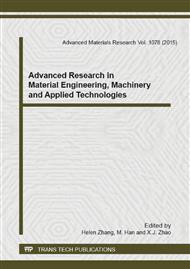p.212
p.216
p.220
p.224
p.228
p.235
p.239
p.246
p.250
Study of Jet Noise Reduction on Separated Exhaust System Using Chevron Nozzles
Abstract:
The jet noise reduction of chevron nozzles was investigated on high bypass ratio turbofan engine separated exhaust system using both computational predictions and scale model experiments. Six different exhaust nozzles are designed including one baseline nozzle and five different chevron nozzles. The jet noise experiments were carried out in the anechoic chamber. Tam and Auriault’s jet noise prediction theory and MGBK theory were used to predict the noise spectra of different exhaust nozzles. The results show that the far-field noise spectra as well as the noise reduction benefits of chevrons are predicted correctly by the two theories although some discrepancies occur at the high frequency range, and Tam and Auriault’s jet noise theory can give relatively more accurate prediction results. chevron nozzles reduce jet noise at the low frequencies, but increase it at high frequencies.
Info:
Periodical:
Pages:
228-234
Citation:
Online since:
December 2014
Authors:
Price:
Сopyright:
© 2015 Trans Tech Publications Ltd. All Rights Reserved
Share:
Citation:


